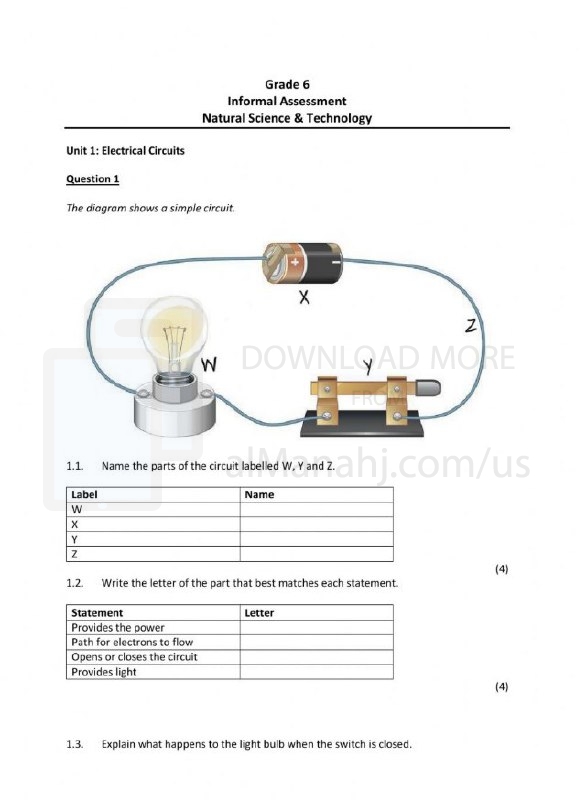| You are here: Almanahj Website ⇒ American curriculum ⇒ 6th Grade ⇒ Information and comm ⇒ Term 1 | ||
|---|---|---|
Worksheet about Battery | ||
|---|---|---|
| Subject: Information and comm | ||
| 6th Grade | ||
| Term 1 | ||
| Year: 2023/2024 | ||
| Size: 204.5KB | ||
| Number of clicks: 105 | ||
| Publish date:November 16, 2023 | ||
| Added by: Eman | ||
| Last download date: 2024-09-12 08:53:28 | ||
| Updated by: Eman9966 on 2023-11-16 15:02:56 | By: theodor FreemindsGradesix | |
| File info: Batteries are essential components of modern technology, providing portable and convenient power sources for a vast array of devices. They are electrochemical cells that convert chemical energy into electrical energy, enabling the operation of smartphones, laptops, tablets, wearable devices, and countless other gadgets. Types of Batteries: Lead-acid batteries: The oldest type of rechargeable battery, known for their low cost and high energy density. Nickel-cadmium (NiCd) batteries: Durable and reliable batteries, often used in power tools and industrial applications. Nickel-metal hydride (NiMH) batteries: Improved versions of NiCd batteries, offering higher energy density and longer lifespan. Lithium-ion (Li-ion) batteries: The most common type of rechargeable battery, known for their high energy density, lightweight design, and long lifespan. Lithium-polymer (Li-poly) batteries: A variant of Li-ion batteries, offering higher energy density and flexibility in shape and size. Applications of Batteries: Mobile devices: Smartphones, laptops, tablets, and wearable devices rely on batteries for portable power. Electric vehicles (EVs): EVs use large battery packs to power their electric motors. Medical devices: Pacemakers, insulin pumps, and hearing aids all require batteries for operation. Power tools: Cordless power tools use batteries for convenient and portable operation. Energy storage: Batteries can store excess solar or wind energy for later use. Battery Technology Advancements: Solid-state batteries: These batteries replace the liquid electrolyte with a solid material, promising longer lifespans, faster charging, and improved safety. Graphene-based batteries: Graphene, a carbon-based material, holds promise for batteries with enhanced energy density and faster charging capabilities. Silicon-based anodes: Silicon anodes could significantly increase the energy storage capacity of batteries. Artificial intelligence (AI)-driven battery design: AI is being used to optimize battery designs and materials for improved performance. Challenges and Future Directions: Battery disposal and recycling: Developing sustainable practices for battery disposal and recycling is crucial for environmental protection. Battery safety: Enhancing battery safety and preventing fires or explosions is a priority in battery research and development. Cost reduction: Making batteries more affordable is essential for their widespread adoption in various applications. Sustainable materials: Finding sustainable and ethically sourced materials for battery production is critical for environmental and social responsibility. Conclusion: Batteries are indispensable for modern technology, powering our devices and enabling mobility and innovation. As battery technology continues to advance, we can expect to see even more efficient, powerful, and sustainable batteries that will shape the future of technology. | ||
| Downloading link Worksheet about Battery |
|---|
|
1700120340.pdf
The file is being prepared for download
|
| File images |
|---|
 |